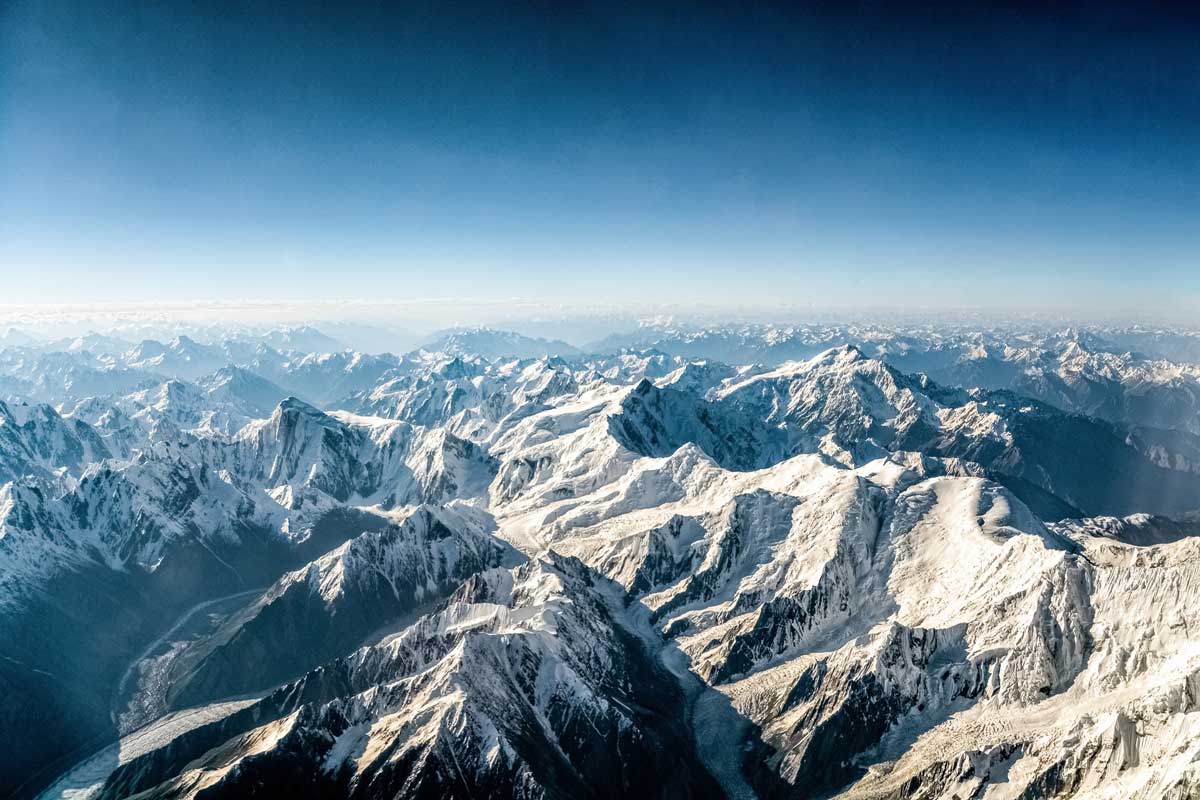Historically, the passes were utilized by a seasonal flow of the Himalayan salt trade caravan that was exported from Tibet to South Asia while rice and other food items were exported from South Asia to Tibet.
The economic interdependence between Nepal and Tibet ended with the construction of massive transportation projects between Tibet and the eastern parts of China.
Kathmandu too became connected to India with various highways and the Himalayan pink salt was replaced by cheaper Indian table salt.
The China-Nepal border grew more complex and became a political tool- linked with the issue of prestige, security interest, environmental concern, and influence.
The magnificent peaks between Nepal and China are a global attraction the topic surrounding smuggling, global warming, and changing geo-politics that affect the story of the Nepal-China border.
Since Mt. Everest was identified as the tallest peak, it has captivated minds and a relentless desire to conquer, a great symbol of the prestige of reaching an unparalleled height.
At a time when Nepal was closed to foreigners, Western expeditions tried to climb from the Tibetan side but failed, their luck only changed when the politics transformed as Tibet became closed to Westerners and Nepal started opening trekkers to ascend the highest peaks.
In 1953, Edmund Hillary and Tenzing Norgay climbed Mt. Everest from the Nepali side cementing the Nepalese claim over the peak.
This was a time when Communist China was struggling to be perceived as a legitimate power in the international arena, it couldn’t act as a bully against smaller Nepal.
China needed the prestige of gaining the custodianship of the highest peak which would help gain domestic support.
The international politics allowed Nepal to have a comfortable position in the border dispute and in 1961, Mt. Everest was agreed upon as the international border between Nepal and China.
The idea of ownership of Mt. Everest still gets trapped in dispute as the Chinese and Nepali sides like to project as if the entire peak is a part of their sovereign territory.
Everest isn’t a critical junction between Nepal-China geopolitical relationships but only the tip of the iceberg.
Tibet is considered China’s soft underbelly which is affected directly by a porous border with Nepal alongside the bordering communities that share cultural and religious sentiments with Tibetans.
In the 1960s, the CIA-assisted Khampa raid in Tibet was conducted by Mustang, a major trading post between Nepal and China. The ruler of Nepal may have received a warm red carpet treatment to turn a blind eye towards CIA activities in Nepal.
It should be remembered that while the King of Nepal received warm treatment in the United States the democratically elected Prime Minister was in jail without a trial.
This reveals the machtpolitik nature of international relations which was deeply affected by the Nepal-China border.
The grand treatment of Nepal ended in 1972 when Chairman Mao met President Nixon, ending the era of CIA support to Khampa and in 1974 Nepal finally sent its army to terminate the rebellion.
However, these historic incidents would have a long-lasting impact on the Chinese perception of Nepal. Nepalese politicians are very careful not to enrage the West or China- but when they failed to understand the criticality of the issue- the leadership suffered brutally.
In 2005, in alignment with Chinese interests, King Gyanendra banned the Tibetan Refugee Welfare Office, these actions further distanced him from Western powers. King Gyanendra by the end of the next year, a popular movement forced him to hand over power to democratic forces.
In Nepal, even the non-communist parties are also careful and try to keep their distance from the Tibetan movement, as it’s well said- ‘you can change your friends but not your neighbors’.
China has a clear security motive in Nepal and has been providing benevolent aid missions in Nepal and as the Chinese interest grows this also increases Western interest in the country.
There are also issues of gold smuggling from China to Nepal while rhino horns are smuggled from Nepal to China- the porous border has been a blessing to smugglers and would require bilateral cooperation to prohibit illicit trade.
There are additional non-traditional security dimensions that affect Nepal-China border politics.
Nepal remains a climate-vulnerable country. Many lakes in Tibet feed water to Nepalese rivers and the glacial lake outburst will have a detrimental impact destroying the Nepalese economy and livelihood.
In 2021, the Pemdam Glacial Lake outburst in Tibet destroyed the Melamchi water supply and caused a considerable water shortage in the capital of Nepal.
China with its economic progress can monitor the glacial lakes, and have the resource prowess to provide timely information, as well as, even mitigate the rising crisis. However, all of these actions put China in a comfortable position to influence Nepal.
During the Indian economic blockage- Nepalese suffered as they could not buy basic necessity items giving rise to anti-Indian sentiments, while China closed its borders during the COVID-19 but such negative sentiments did not grow.
After the two Communist Parties formed a government in Nepal, China on May 2024 finally opened 14 trading points from Nepal to China which remain blocked since China closed its border.
The rise of Chinese investment in Nepal has helped Chinese to further strengthen its position in Nepal. China has been investing in improving the passes as an international trade junction transforming the mindset of locals who previously held strong cultural sympathy for Tibetans.
The communist parties are the dominant forces in Nepal which makes China perceived as a preferable power and Nepalese politicians act to be pro-China.
The simple salt routes with the growth of technology have transformed into a multi-dimensional trade relationship and are further being impacted by climate change.
Therefore, China has been able to utilize the Himalayan border to gain political leverage with little repercussions and has made the borders an asset from liability in the past.
